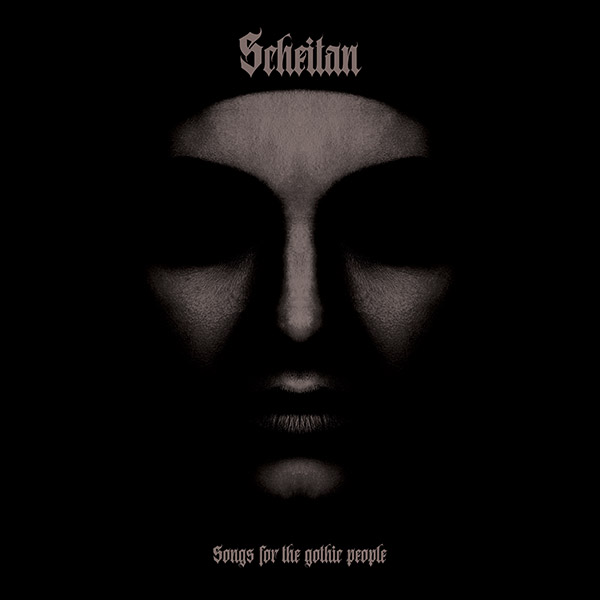Dark Wave Music
Although Scheitan primarily is leaning towards the more gothic element there has been traces of ambient and dark wave in the music all the way through the bands career. Above you’ll find the song “Erased” from the 2024 album “Songs for the gothic people”. Already on the bands second album, “Berzerk 2000” there were songs that struck a more ambient landscape.
“Sad to say” was featured on the album, female vocalist Lotta Högberg is singing on the track, a mixture of black metal chords together with ambient guitars and keyboards.
“My isle” on the bands third album “Nemesis” once again featured Lotta Högberg on vocals in a dark, gothic, ambient ballad.
Origins of Dark Wave Music
Dark wave music is a genre that continues to captivate listeners with its melancholic, atmospheric sound. Emerging from the post-punk scene of the late 1970s and 1980s, dark wave blends the cold, detached emotion of new wave with darker, gothic elements, creating a distinct subculture that remains influential to this day.
The roots of dark wave music are deeply entwined with the post-punk movement, which emerged as a reaction to the raw energy of punk rock. Artists in the post-punk scene sought more depth and emotional complexity, mixing punk’s rebellious spirit with new instrumentation, particularly synthesizers and drum machines. The result was a sound that was both introspective and experimental.
Germany played a significant role in the birth of dark wave. Early bands like Xmal Deutschland and Malaria! fused cold, synthetic sounds with bleak, gothic atmospheres. Meanwhile, in the UK, bands like The Cure and Siouxsie and the Banshees contributed to the genre’s growth with their brooding melodies and cryptic lyrics.
Dark Wave Sound and Style
What sets dark wave apart from other post-punk subgenres is its haunting mood and emphasis on atmosphere. Key elements of dark wave music include:
- Heavy use of synthesizers: The synths create a cold, electronic soundscape that complements the melancholic themes of the lyrics.
- Deep, emotional vocals: Vocals in dark wave often range from haunting baritones to ethereal soprano tones, with singers conveying emotional intensity through both vocal depth and lyrical content.
- Driving basslines and minimal guitar work: The bass guitar often serves as the backbone of dark wave tracks, creating a rhythmic yet ominous undertone. Guitars, while present, are typically less aggressive than in traditional punk or rock, favoring texture over solos.
- Dark, introspective lyrics: Themes of alienation, sadness, existentialism, and darkness pervade the lyrics, often exploring personal or societal turmoil.
Key Artists and Albums
Several key artists helped define dark wave, and their albums are essential listening for anyone wanting to explore the genre:
- The Cure – Seventeen Seconds (1980) and Faith (1981): Often considered one of the pioneers of gothic rock and dark wave, The Cure’s early albums captured an ethereal, almost otherworldly feel with somber tones and bleak lyrics.
- Clan of Xymox – Clan of Xymox (1985): This Dutch band is a pillar of the dark wave scene, blending synthpop and gothic rock elements with a shadowy, atmospheric sound.
- Dead Can Dance – Within the Realm of a Dying Sun (1987): While incorporating elements of world music and classical influences, Dead Can Dance’s ethereal sound has long resonated within dark wave circles.
- Cocteau Twins – Treasure (1984): Known for their lush, dreamlike soundscapes, Cocteau Twins often blur the line between dark wave and dream pop, creating an emotional soundscape of layered guitar effects and ethereal vocals.
The Dark Wave Aesthetic
The aesthetic of dark wave is closely aligned with the goth subculture, which shares similar musical roots. Dark wave enthusiasts often adopt a minimalist, monochromatic style, favoring black clothing, heavy makeup, and symbols of melancholy. The fashion, however, is not merely an expression of darkness but rather a reflection of the introspective nature that defines the music.
Venues that cater to dark wave fans often feature dim lighting, fog machines, and visuals that enhance the music’s moody atmospheres, helping to create an immersive experience that goes beyond the auditory.
Dark Wave’s Revival and Modern Influence
Although dark wave’s peak was in the 1980s and early 1990s, the genre has seen a resurgence in recent years. Many modern bands are drawing inspiration from the dark, synthetic sounds of early dark wave and blending them with new genres such as electronic, synthwave, and post-punk revival. Artists like Drab Majesty, Boy Harsher, and Lebanon Hanover have helped lead the resurgence, keeping dark wave relevant in today’s music scene.
In addition to the music itself, dark wave’s aesthetics and themes have infiltrated various forms of media, from fashion and photography to film and television. Shows like Stranger Things and The Witcher have adopted elements of dark wave music to enhance their atmospheres, reflecting the genre’s lingering cultural influence.
The Timeless Allure of Dark Wave
Dark wave’s enduring appeal lies in its ability to tap into the deeper emotions and fears of its listeners. The music speaks to feelings of alienation, melancholy, and introspection that transcend time, making the genre as relevant today as it was during its inception.
As contemporary artists breathe new life into dark wave, the genre continues to attract a new generation of fans while remaining a cherished staple for those who have been devoted to its haunting sound for decades. Whether you’re a long-time fan or new to the scene, dark wave’s dark yet compelling allure is sure to leave a lasting impression.

Scheitan – Songs for the gothic people
Are you looking for more dark music after digging through all of this. Check out our new album “Songs for the gothic people”, it’s honestly a lot more “gothic” than dark wave but it should fit all dark souls out there. If you would prefer a physical copy instead of streaming you can order the album on CD or LP at The Circle Music.
